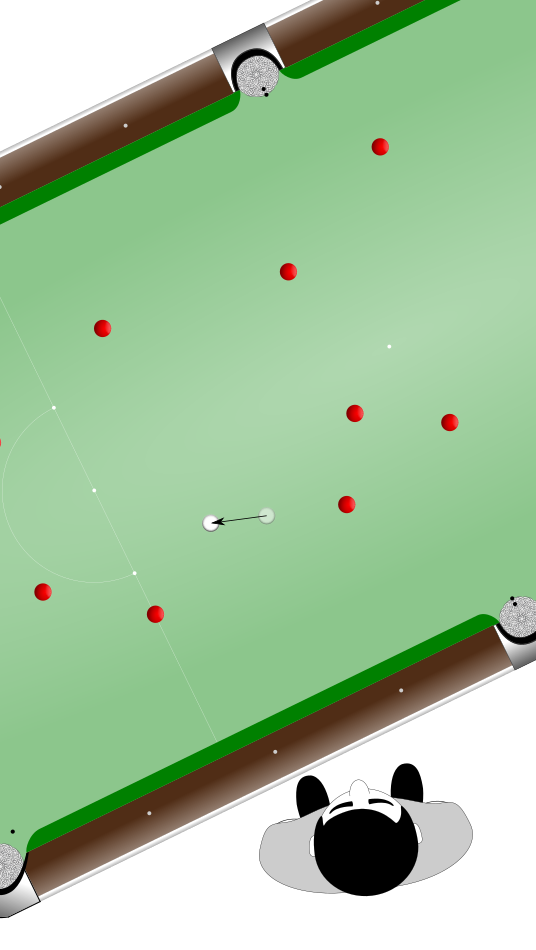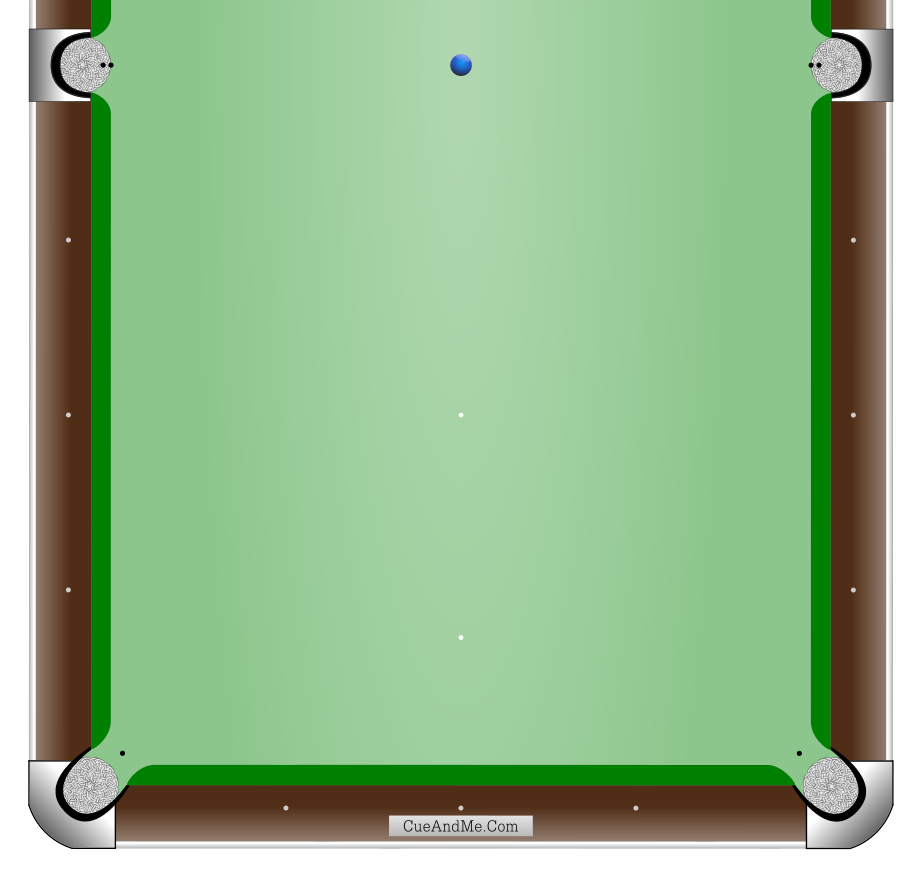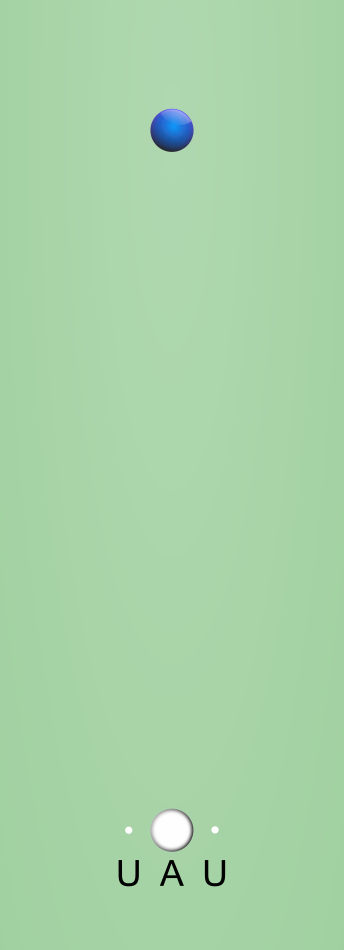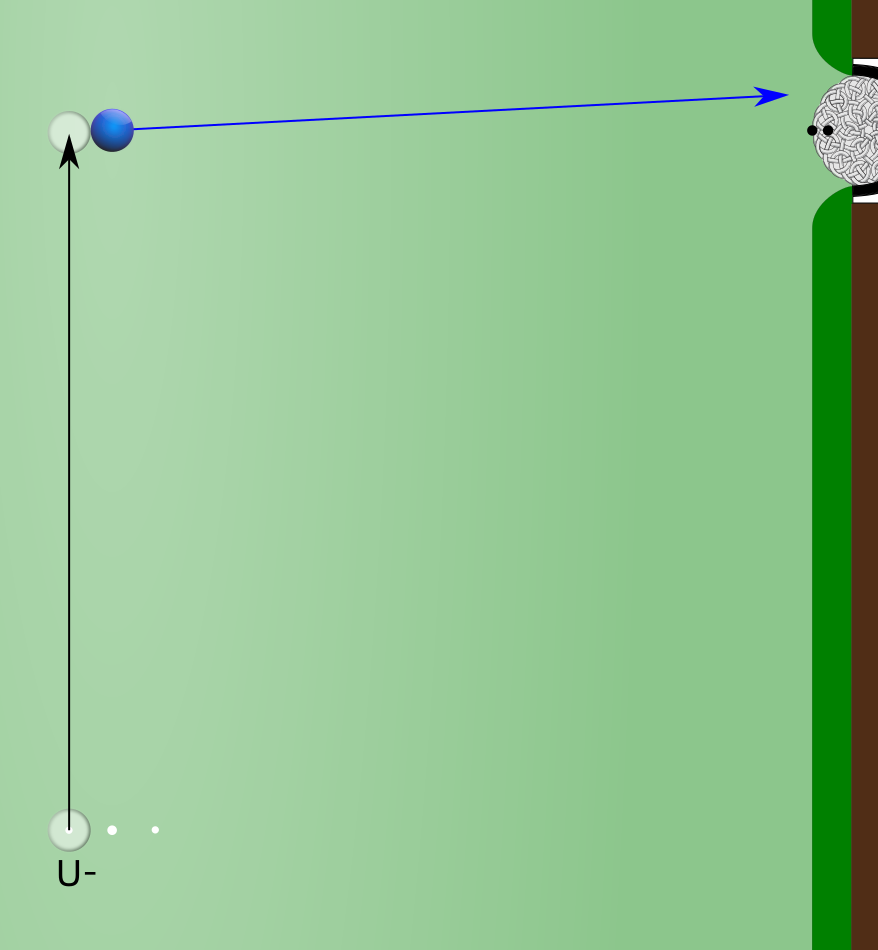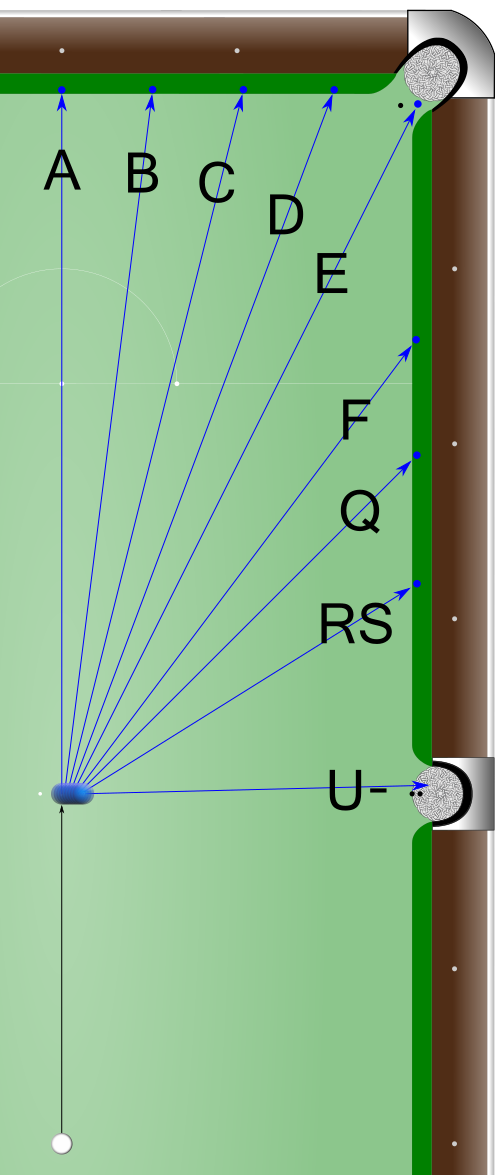Practice Drills and Games
Reference Stepping
This was covered under Additional Tips and Tricks in the Application section. It can be used during play to find the current shot label, but it can also be a great practice drill that teaches us to visualize all of the reference rectangles as we move. For the practice version, you can roll the cue ball to each new reference as you step.
Start by standing in Position 2A with the cue ball and object ball aligned for a straight ‘A’ shot to the pocket.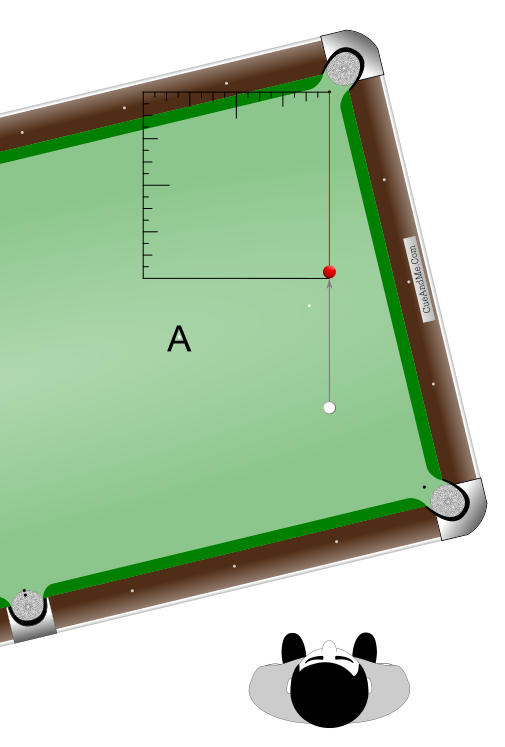
Step sideways into what would be Position 2B for a ‘B’ shot on the same object ball. Roll the cue ball sideways from its original position so that it is in line with your new ‘B’ shot.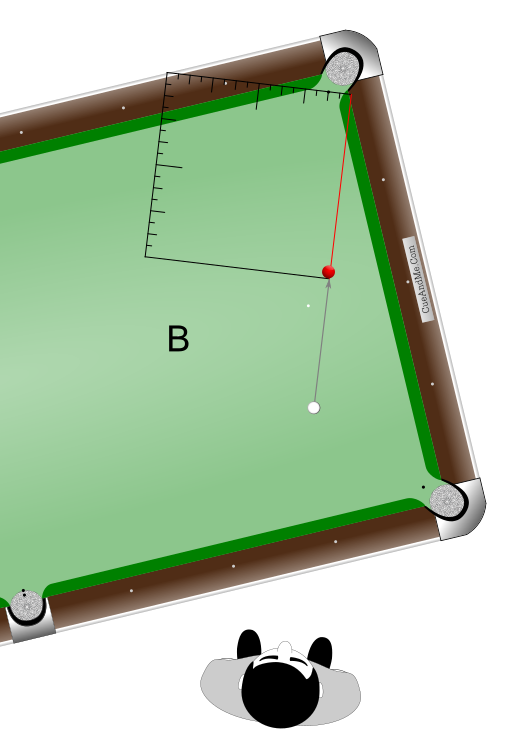
Continue this process one reference at a time.
You can set a goal reference, and when you arrive at the goal you shoot the shot with the goal reference’s aim. For example, you can set the goal of ‘E’. You would begin at ‘A’ and move and roll to ‘B’ then ‘C’ then ‘D’ then ‘E’. Once you have rolled the cue ball to ‘E’ you step into the shot and shoot at the ‘E’ aim. If you miss, it teaches you that you may have overstepped or understepped along the way.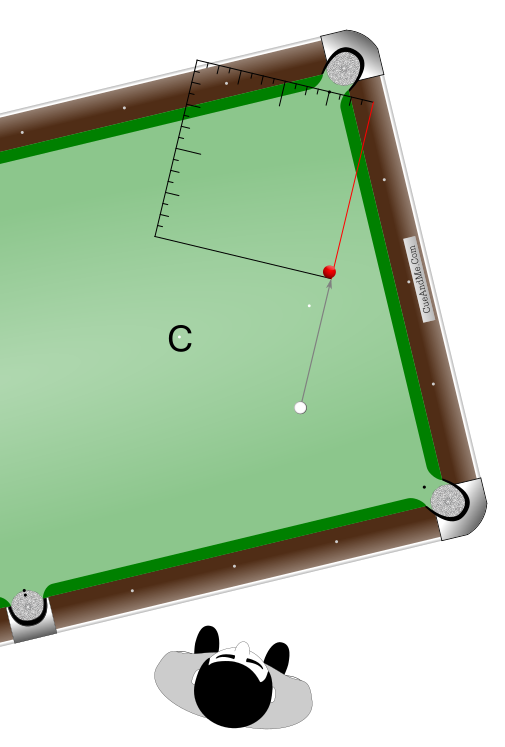
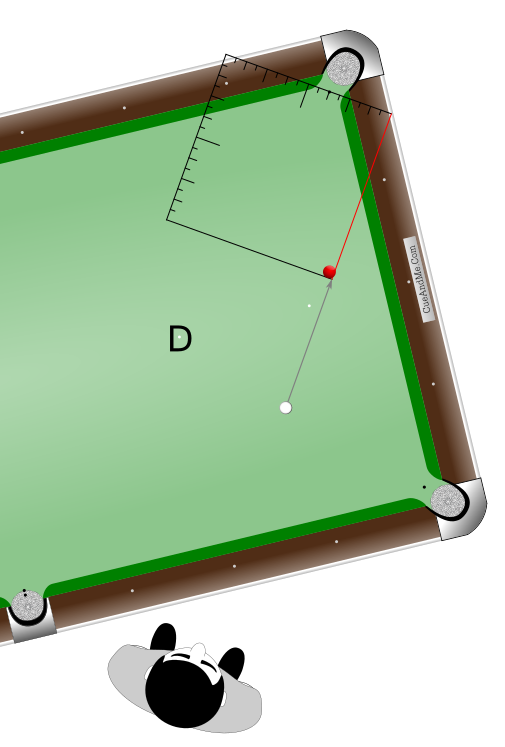
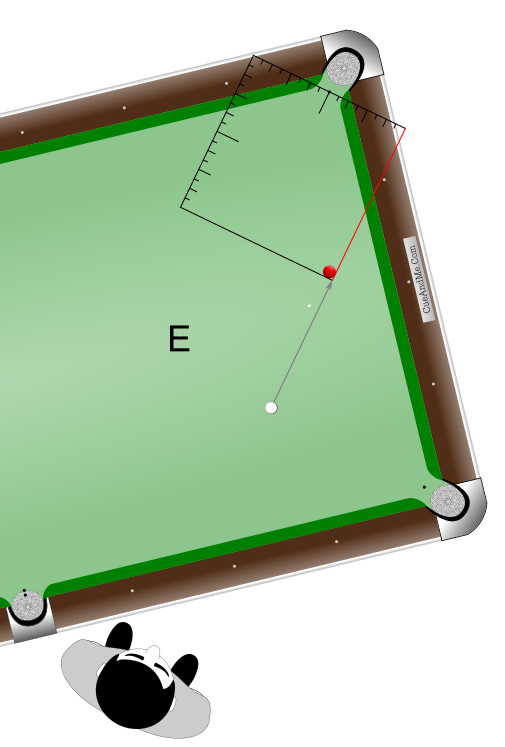
You can also practice Reference Stepping in reverse as explained in the Application Section. Place the cue ball anywhere and walk over to Position 1 behind the object ball. In Position 1 you are also standing in what would be Position 2A for an ‘A’ shot if the cue ball were in front of you.
Step sideways to what would be a Position 2B ‘B’ shot. Step sideways again into what would be a Position 2C ‘C’ shot. Continue to step one reference at a time until you are standing in the true Position 2 location behind the cue ball. From there, you decide on the current shot label and you can shoot to test whether you have understepped, overstepped or stepped properly along the way.
Since different distances from cue ball to object ball and from player to cue ball require different stepping distances, practice Reference Stepping at various distances.
Once you get good at Reference Stepping for the single letter references, you can move on to smaller stepping for double letter references.
You can also try skipping over references when you step, such as going from ‘A’ to ‘C’ to ‘E’. Or even step back and forth, such as going from ‘A’ to ‘C’ back to ‘B’ then ‘D’ back to ‘C’, etc.
Single Reference Game
Here is a fun way to practice recognition of a chosen reference shot. Choose one reference shot to practice such as ‘E’. Break the balls or throw them randomly onto the table. Using any ball as a cue ball, look for any arrangement of two balls and a pocket that form your chosen reference shot rectangle.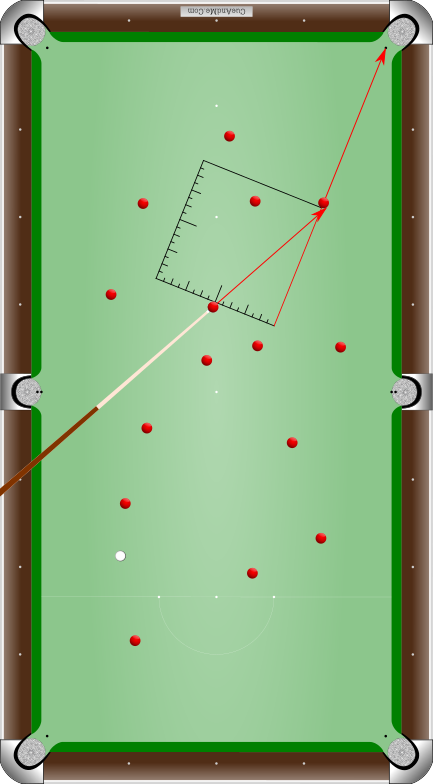
Shoot the shot being sure to use only the chosen reference aim. Whether or not you pot the ball, you learn with every shot.
Search for another arrangement of two balls and pocket that matches your chosen reference and shoot again.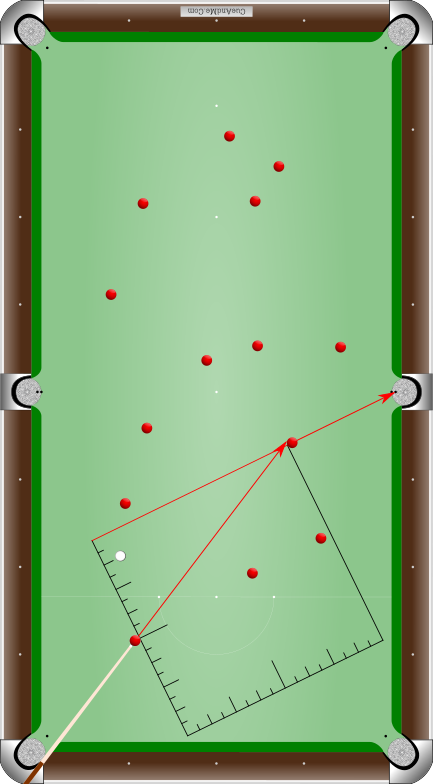
Continue until there are no remaining arrangements that match your chosen reference.
Scoring: Give yourself 1 point for every successful pot and subtract 1 point for every miss or foul. Also subtract 1/2 point for each ball left after having exhausted all matching arrangements.
Roll the White Game
For this game you also choose a single reference shot to practice. Break the balls or throw them randomly onto the table. This time you will only use the white ball as the cue ball. Search for a cue ball to object ball to pocket arrangement that matches your chosen reference rectangle. If you find one, shoot being sure to only use the chosen reference aim.
If you don’t find one, choose any ball as an object ball.
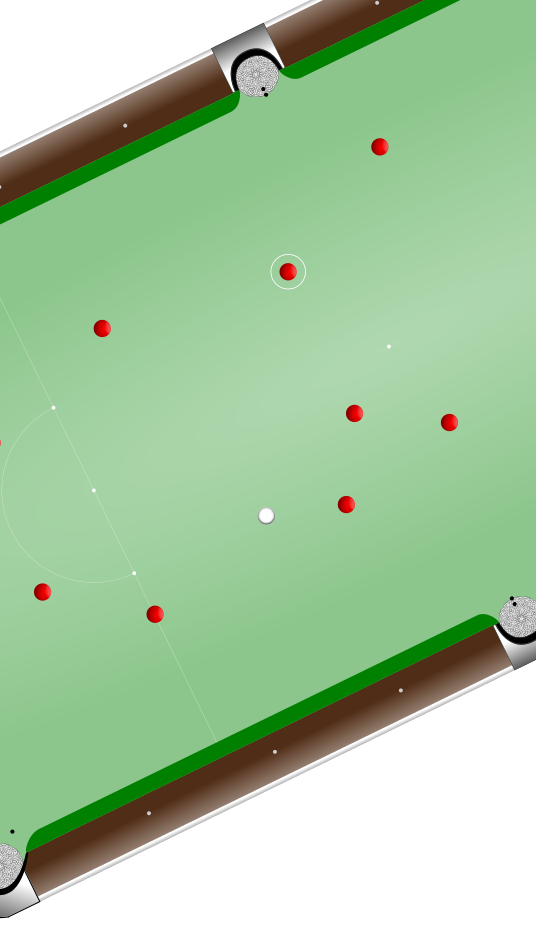 From Position 1, roll the cue ball in only one direction—up, down, left, or right—until the setup appears to match your chosen reference rectangle.
From Position 1, roll the cue ball in only one direction—up, down, left, or right—until the setup appears to match your chosen reference rectangle.

Move to behind the cue ball and shoot.
Search for another reference-matching arrangement or roll the cue ball again. Shoot. Continue this way until all object balls have been potted.
Scoring: Give yourself 2 points for every successful pot of an already matching arrangement. Give yourself 1 point for every successful pot of a “rolled” cue ball shot. Subtract 1 point for every miss or foul.
Roll the Object Ball Game
Limited Aim Game
In this game, we choose a limited set of aims that we are allowed to shoot. In order to pot an object ball that doesn’t match one of our available aims, we attempt to manipulate the object ball’s release angle with our repertoire of different speeds and spins. We can also aim for areas to either side of center pocket to cheat the pocket.
An example game would be one that affords the use of only ‘A’, ‘B’, ‘C’, ‘D’, ‘E’, ‘F’, ‘Q’, and ‘RS’ aims. Break the balls. Choose any object ball to shoot. If the setup happens to call for an aim that is between two of our available reference aims, choose one of the two aims and alter the release line of the object ball using the effects of speed and/or spin.
For example, if a shot rectangle is normally ‘CD’ you might choose to aim at ‘D’ and use slow speed and stun to help throw the object ball along a release path that is a few degrees straighter.
Or you might choose to aim at ‘C’ and use slow speed with outside spin to throw the object ball along a release path a few degrees steeper.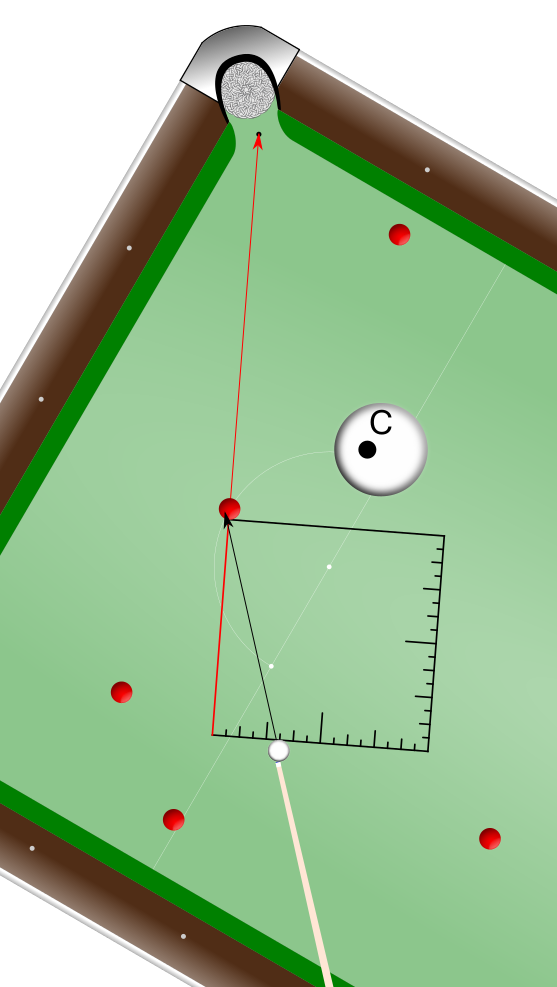
Scoring: Give yourself 1 point for every successful pot and subtract 1 point for every miss or foul.
One Direction Drill
This drill is to help see the differences in rectangles and release lines from reference to reference. For every reference, you will shoot the cue ball in only one direction—perpendicular to the far cushion.
Cue Ball Adjustment Version
On a pool table carefully measure and mark the center of the table between the middle pockets, or on a snooker table simply use the blue spot. Place the object ball on this spot.
Place the cue ball on the snooker table’s pink or pool table’s foot spot, and on both sides of it place a touching ball.
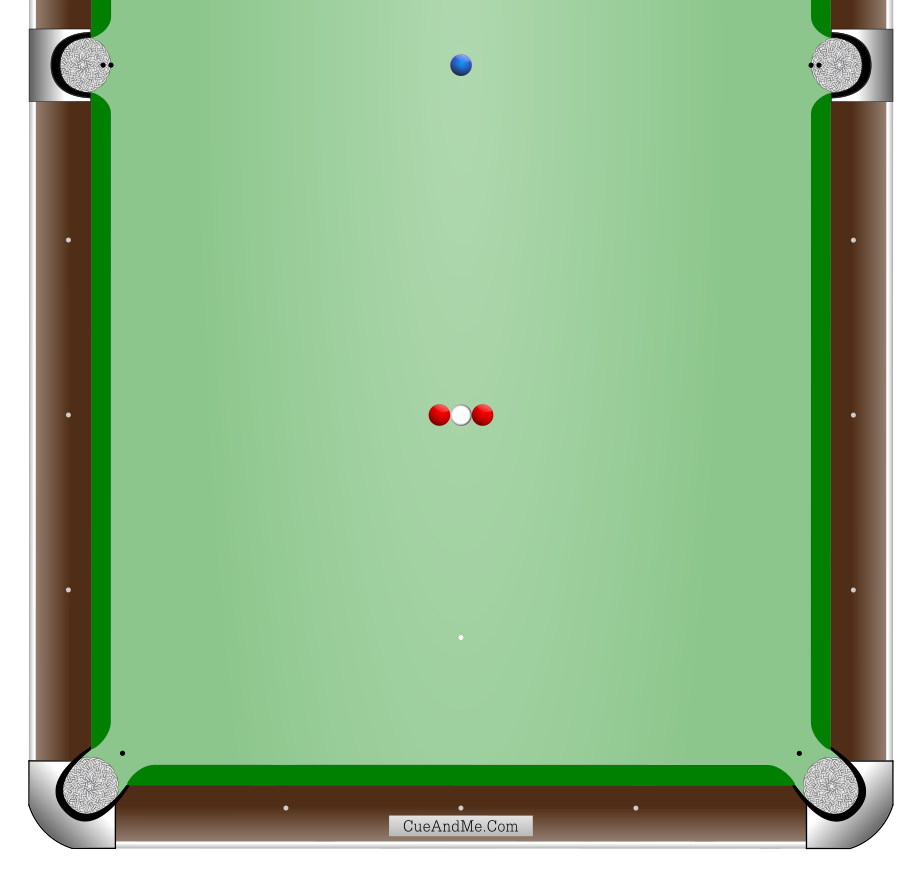 Mark the resting positions of both balls and remove them. In doing so, you have marked the extreme cue ball resting locations for impossibly thin ‘U’ shots that cut the object ball left as well as right. The pink or foot spot marks the ‘A’ cue ball resting position.
Mark the resting positions of both balls and remove them. In doing so, you have marked the extreme cue ball resting locations for impossibly thin ‘U’ shots that cut the object ball left as well as right. The pink or foot spot marks the ‘A’ cue ball resting position.
You can now place the cue ball on the pink or foot spot for an ‘A’ shot that sends the object ball perpendicular to the far cushion. You can also place the cue ball barely inside either of the marked ‘U’ positions to practice ultra thin ‘U-’ cuts.
Roll the cue ball between these extremes to all reference aims for practice. The ‘E’ resting position would be halfway between the spot and the ‘U’ mark. You can locate the rest by using midpoints between other midpoint resting positions. Since you are always shooting the cue ball perpendicular to the far cushion, only its resting positions change from reference shot to reference shot.
Each reference aim will have a different release line somewhere between the ‘A’ and ‘U’ extremes. You can mark the cushions where the object ball contacts them for each reference shot and use these marks to help imprint reference release line into your memory.

This also allows you to practice visualizing the rectangles and seeing how the object ball paths are altered with various speeds and spins.
Object Ball Adjustment Version
You can instead leave the cue ball in place and adjust the object ball’s position. Place a ball on the blue or center spot and on both sides of it place a touching ball. Mark the resting ‘U’ positions of the two balls and remove them. Once marked, shoot the cue ball from the pink or foot spot only, but move the object ball left or right between the ‘A’ and ‘U’ extremes to accommodate the different reference shots.
Rotation Solitaire Game (Pool Only)
This is a one-player variation on rotation games. It can also be played with two players where each player runs a full table and the player with the lower score is the winner. It is not a game specific to Angle Detective but is useful because it offers the player a wide variety of shot angles for shot label recognition and aiming practice. It also forces the player to practice cue ball control.
Rack the balls in random order. Break from behind the head string. Throughout the game and including the break, any uncalled balls that go into pockets are spotted on the foot spot. If a ball occupies or obstructs the foot spot, subsequent balls are spotted in a line behind the foot spot leaving the space of one full ball diameter between each ball or one ball diameter away from any obstructing ball.
After the opening break, the player has cue ball in hand to place anywhere on the table. The goal is to clear the table with the lowest point total possible. Points are penalties. Negative points are rewards.
Scoring:
- Calling and potting the lowest numbered ball on table is 0 points. Missing it is 1 point.
- Calling and potting any ball except the lowest numbered ball is ½ point. Missing it is 1 ½ points.
- Scratch, table scratch or other foul is 2 points. If the ball leaves the table then cue ball in hand in kitchen.
- Called combination, bank or carom is rewarded with -½ point.
- Option to pass on a shot and instead take cue ball in hand in kitchen is 2 points.
Drill and Game Variations
Try restricting the shots during practice games to only one type of cueing such as all draw/screw shots, all stun shots, all topspin shots, all soft, all medium, all hard, all inside spin or all outside spin.

